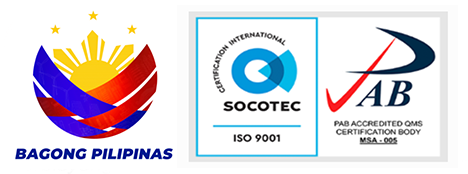As told by Mr. Mickel Fruelda, BSPMC
Barangay Banice, Banton, Romblon
I am just an ordinary citizen of Brgy. Banice, Banton, Romblon. But everything else seemed to change after the project of DSWD, or what we call Kalahi-CIDSS, came to our barangay. From being ordinary, I was taught that I can be extraordinary, even in my own simple way.
Being the head of the family, I live each day working as a driver of a “habal-habal”. My earnings as a driver are not enough to get my family get through the day, hence I also engage in kopra activities and fishing to provide for my family’s needs. But after Kalahi-CIDSS came to our municipality of Banton, it felt like there is always something to do. From providing to my family, I turned to being an active member of the community.
Our 5th class municipality was soon transformed as barangays engaged in the activities of Kalahi-CIDSS. In our barangay, my fellow members and I identified the main problem of the community. One of the problems that we faced was the rough road, which makes it difficult for us to transport our products to the poblacion. Many community members deem this as a problem since they rely on the earnings they will get from their products. But due to the road condition in their place, many products were not sold, thus less earnings on their end.
This was presented in the barangay assemblies that were consequently conducted, and after several assemblies, it was agreed that the barangay will have the cementing of farm-to-market as the sub-project.
I was deeply engaged in Kalahi-CIDSS activities that I was voted thrice, first as a volunteer in the Participatory Situational Analysis, second as a volunteer for the Project Preparation Team assigned to make the project proposal and third in the post of the Barangay Sub-project Management Committee Chairperson.
Being the BSPMC Chairperson posed a big challenge to me since I am just new to the Kalahi-CIDSS process. I must admit that I do not possess an extensive knowledge and have not acquired the necessary skills to take up on the position. But honestly, after what we’ve been through in the barangay sub-project implementation, I think I was able to use all the things I learned, but this won’t be possible if not for the help of our community facilitator. I learned a lot and have developed self-confidence, thanks to the Kalahi-CIDSS.
But more than self-development, what makes me grateful to the project is the transformation it left in the barangay. Many did notice that upon the arrival of Kalahi-CIDSS, many notable changes took place. First off with how things are run in the barangay. I have no knowledge of how things were done since I am not part of the barangay council. Yet from what I know, if there is a project that needs to be done, they do it among themselves, and without informing the people of how they can be part of it. The arrival of Kalahi-CIDSS changed this. The barangay works together with the people, with the latter being more participative. Likewise, bayanihan was greatly practiced and have become evident, encouraging the people all the more.
Second with the decision-making, to which the community members already have a say, unlike before in which the officials’ decisions are the only ones that were followed. I am hopeful that these changes will carry on to the next years. Our barangay will have a long way to go, with learnings from the community-driven development (CDD) to guide us.
I am sure that I am not the only one who is just as grateful to the Kalahi-CIDSS project. My sentiments will surely be re-echoed by my fellow community members and all those who have experienced Kalahi-CIDSS.
Maramong salamat sa Kalahi-CIDSS! ###
![]()


